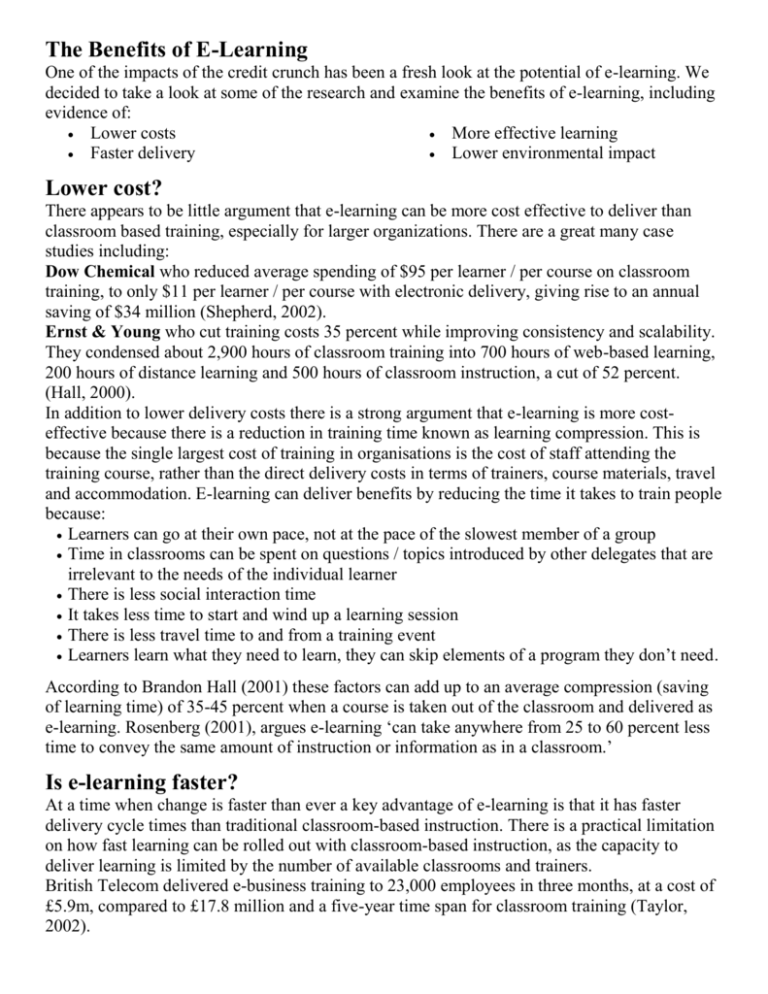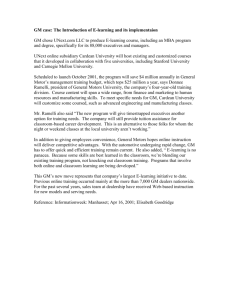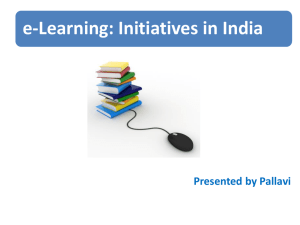2 Benefits of ELearn..
advertisement

The Benefits of E-Learning One of the impacts of the credit crunch has been a fresh look at the potential of e-learning. We decided to take a look at some of the research and examine the benefits of e-learning, including evidence of: Lower costs More effective learning Faster delivery Lower environmental impact Lower cost? There appears to be little argument that e-learning can be more cost effective to deliver than classroom based training, especially for larger organizations. There are a great many case studies including: Dow Chemical who reduced average spending of $95 per learner / per course on classroom training, to only $11 per learner / per course with electronic delivery, giving rise to an annual saving of $34 million (Shepherd, 2002). Ernst & Young who cut training costs 35 percent while improving consistency and scalability. They condensed about 2,900 hours of classroom training into 700 hours of web-based learning, 200 hours of distance learning and 500 hours of classroom instruction, a cut of 52 percent. (Hall, 2000). In addition to lower delivery costs there is a strong argument that e-learning is more costeffective because there is a reduction in training time known as learning compression. This is because the single largest cost of training in organisations is the cost of staff attending the training course, rather than the direct delivery costs in terms of trainers, course materials, travel and accommodation. E-learning can deliver benefits by reducing the time it takes to train people because: Learners can go at their own pace, not at the pace of the slowest member of a group Time in classrooms can be spent on questions / topics introduced by other delegates that are irrelevant to the needs of the individual learner There is less social interaction time It takes less time to start and wind up a learning session There is less travel time to and from a training event Learners learn what they need to learn, they can skip elements of a program they don’t need. According to Brandon Hall (2001) these factors can add up to an average compression (saving of learning time) of 35-45 percent when a course is taken out of the classroom and delivered as e-learning. Rosenberg (2001), argues e-learning ‘can take anywhere from 25 to 60 percent less time to convey the same amount of instruction or information as in a classroom.’ Is e-learning faster? At a time when change is faster than ever a key advantage of e-learning is that it has faster delivery cycle times than traditional classroom-based instruction. There is a practical limitation on how fast learning can be rolled out with classroom-based instruction, as the capacity to deliver learning is limited by the number of available classrooms and trainers. British Telecom delivered e-business training to 23,000 employees in three months, at a cost of £5.9m, compared to £17.8 million and a five-year time span for classroom training (Taylor, 2002). But is e-learning effective? A nine-year survey of the research literature in training published by Fletcher and Tobias in ‘Training and Retraining’, commissioned by the American Psychological Society, and published in 2000, concluded that: ‘Learners learn more using computer-based instruction than they do with conventional ways of teaching, as measured by higher post-treatment test scores.’ Specific studies from Fletcher (1999), Kulik (1994), Willett, Yamashita & Anderson (1983) all confirm that learners learn more using computer-based instruction than they do through traditional classroom methods. Brandon Hall (2001) notes that the learning most suited to e-learning conversion includes information and knowledge, and processes and procedures. This report noted that learning gains have been found in: learners’ attitudes toward the e-learning format and training in general learners’ scores on tests, certifications or other evaluations the number of learners who achieve ‘mastery’ level and / or ‘pass’ exams learners’ ability to apply new knowledge or processes on the job long-term retention of information Is it environmentally better? Online learning is an effective way for organizations to reduce their carbon footprint. A study by the Open University, “Towards Sustainable Higher Education: Environmental Impacts of Campus-Based and Distance Higher Education Systems,” found that on average, the production and provision of distance learning courses consumed nearly 90 percent less energy and produced 85 percent fewer CO2 emissions per student than conventional campus-based university courses. The main savings were due to a reduction in the amount of student travel, economies of scale in the use of the campus site, and the elimination of much of the energy consumption of students’ housing. In other words, studying from home and using a home computer was far more energy efficient. The Open University study examined in detail energy costs associated with classroom learning in terms of CO2 emissions, and compared these to the costs of learning via a computer. Computers are no environmental saints: They burn energy at least 0.125 kwh per hour for a desktop PC, and can contain toxic materials such as lead, cadmium, and PCB’s that pose serious health and environmental hazards. Despite this, the CO2 emission levels associated with computer use were significantly less than those associated with more conventional instructional delivery methods, and much of the studying was done from home using computers that students already owned. E-learning can also save trees by saving paper. Many e-learning courses are entirely selfcontained, presenting all learning content online, or providing alternatives to paper-based forms of communication through such tools as email, PDF manuals, synchronous classrooms, and other web-based tools. Article available at: http://kineo.com/elearning-reports/the-benefits-of-e-learning.html






